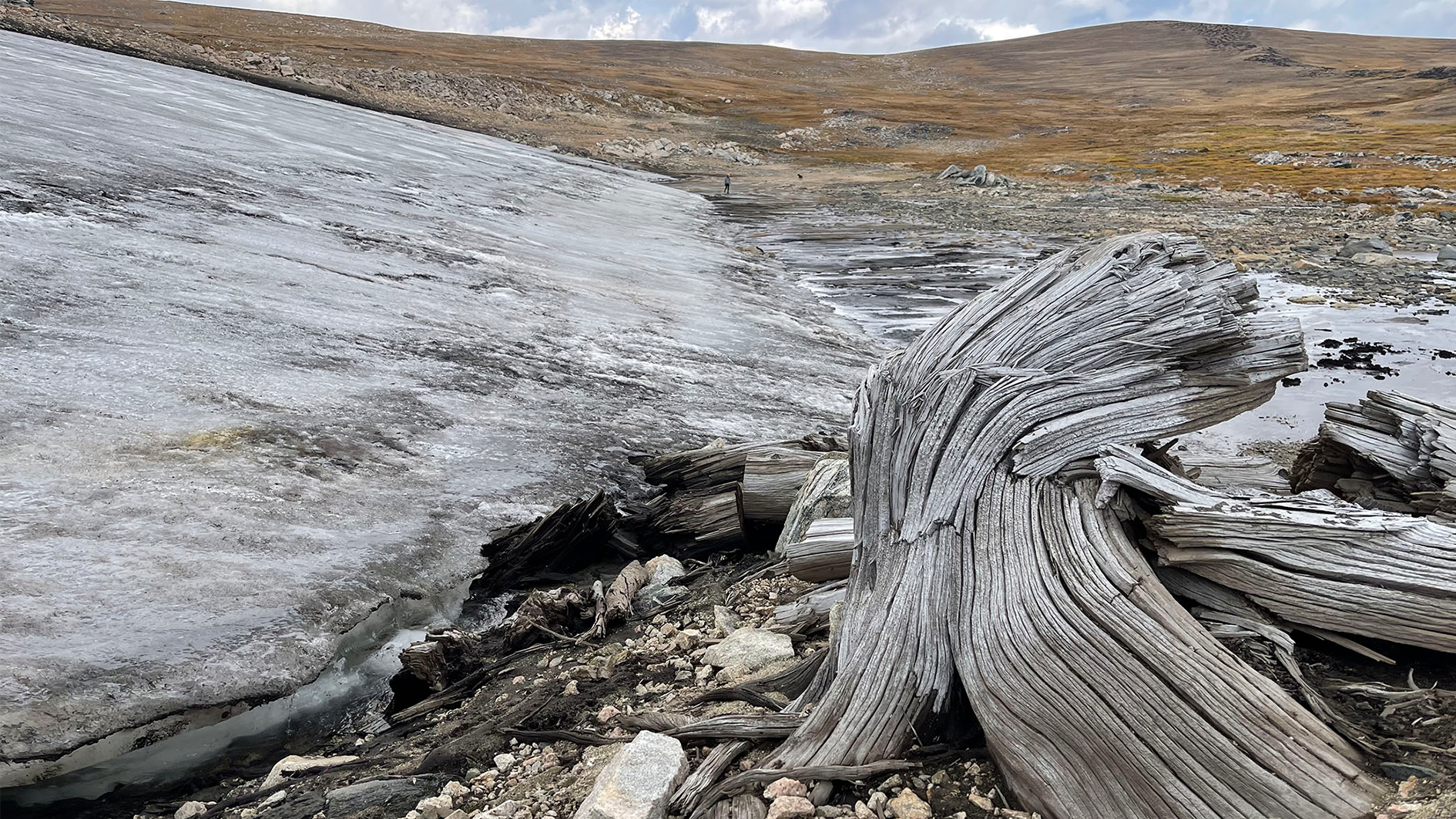
The remains of an ancient forest have been discovered in a popular hiking area of the Rocky Mountains.
Surrounded by backcountry hiking trails, the Beartooth plateau is a frozen tundra that sits at over 10,000ft / 3,048m in the Absaroka Beartooth wilderness, north of Yellowstone National Park.
Underneath lies the remains of a roughly 6,000-year-old Whitebark Pine forest, untouched for thousands of years beneath the ice. Despite its perfect preservation, parts of the forest are now visible thanks to climate-change-induced ice melting.
Scientists from Montana State University, the US Geological Survey, and various collaborating institutions discovered the ancient woodland while carrying out an archeological survey of the area.
"We were really surprised to find a forest was emerging from the margins of the ice," Cathy Whitlock, a professor of Montana State University, told ‘As It Happens’ radio host Nil Koksal.
“I'm thrilled because it's a window on the past. It tells us what this high-elevation environment was like 6,000 years ago.”
Whitlock’s team uncovered around 30 trees, over 500ft / 152.4m above the existing tree line. Through carbon dating and looking at the rings inside the trunks, they were able to date the trees from 5,440 to 5,950 years old.
Alongside the immaculately preserved forest, researchers discovered evidence of ancient humans beneath the tundra, including a wooden shaft they believe was used as a spear.

As global temperatures increase, snow and ice in alpine areas like the Rocky Mountains are melting alarmingly fast.
“As a person who worries about the future and climate change and what these alpine areas will look like for my grandchildren, it makes me really sad,” continued Whitlock.
“These ice patches are melting and they probably won't be there in a few more decades.”
The effects of climate change are evident in mountainous areas worldwide.
In 2023, a hiker in the Italian Alps made a similarly startling discovery when she happened upon the remains of an ancient ecosystem previously covered in snow.
Claudia Steffensen found footprints belonging to a giant pre-historic lizard, dating back some 280 million years.
“Snow cover is absolutely important for the energy balance of the atmosphere,” Professor Marco Carrer of the Department of Land Environment Agriculture and Forestry at the University of Padova told Carbon Brief.
“For the biosphere, there are a lot of plant and animal species, especially in the mountain area that really need the snow cover.”
- The best waterproof jackets: brave the elements with these top-rated hard and softshells
- The best budget hiking boots: quality pairs at low prices







